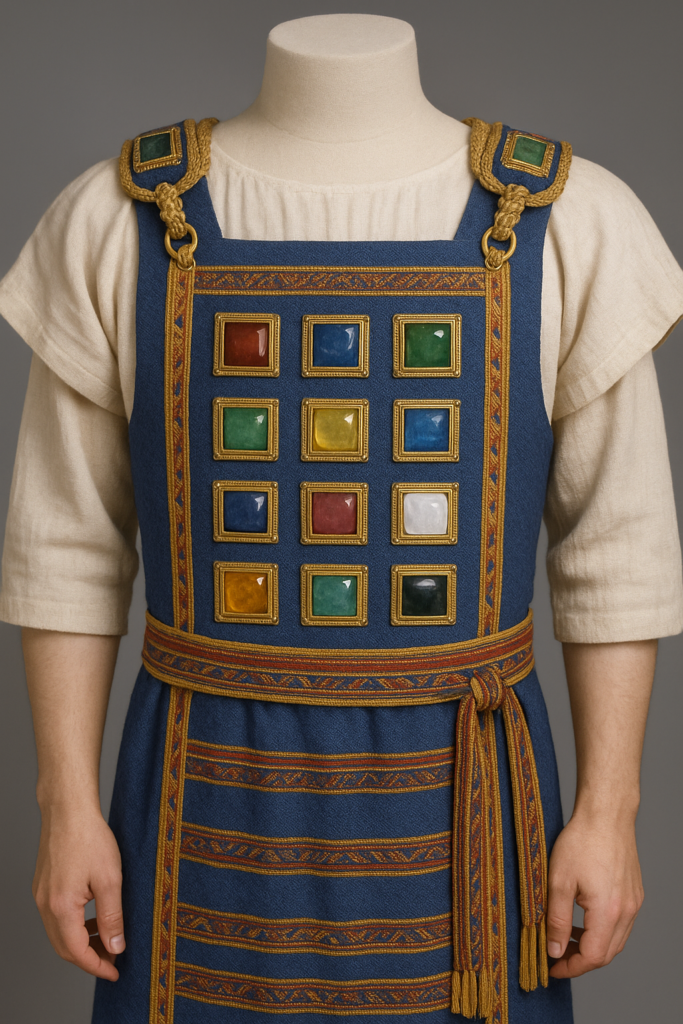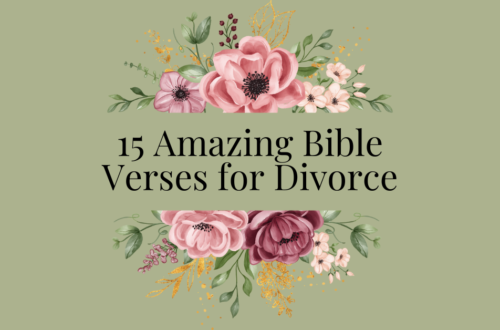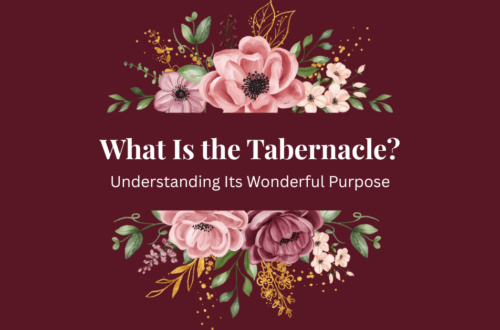The Bible is filled with terms, objects, and practices that can feel foreign to us today. One such term is “ephod.” If you’ve ever asked, what is an ephod? you’re not alone. This item, mentioned multiple times throughout the Old Testament, carried deep spiritual and symbolic meaning for the people of Israel. Understanding what an ephod is and why it mattered provides a richer picture of God’s instructions, the role of the priesthood, and how everything in the Old Testament ultimately points us to Jesus Christ.
In this blog, we will explore what an ephod is, its origins, its function in worship, how it symbolized God’s presence among His people, and why it still matters for Christians today.

What Is an Ephod? The Basic Definition
The ephod was a sacred garment worn by the high priest of Israel. It was a specific part of the priestly attire described in detail in the book of Exodus. More than just clothing, the ephod represented authority, intercession, and access to God.
In Exodus 28, God gave Moses instructions for building the Tabernacle and for the garments of the priests. The ephod was one of the key pieces of the high priest’s outfit, designed to set him apart and prepare him to serve in the holy presence of God.
So, to put it simply, the ephod was both a garment and a spiritual symbol. It wasn’t ordinary clothing—it was holy, consecrated, and full of meaning.
The Appearance of the Ephod
The ephod was a beautiful garment, made with the finest materials. Exodus 28:6 (ESV) says, “And they shall make the ephod of gold, of blue and purple and scarlet yarns, and of fine twined linen, skillfully worked.”
The materials used for the ephod reflect its importance:
- Gold – Symbolizing purity, divinity, and glory.
- Blue – Often representing heaven and God’s authority.
- Purple – A royal color, reminding Israel of God’s kingship.
- Scarlet – Symbolizing sacrifice, which pointed ahead to Christ’s ultimate sacrifice.
- Fine linen – Representing holiness and purity.
The ephod also had two shoulder pieces with onyx stones, each engraved with the names of six tribes of Israel. This meant that when the high priest wore the ephod, he was literally carrying the names of God’s people before Him. It was a reminder that the priest interceded on behalf of the entire nation.
The Breastpiece and the Ephod
Attached to the ephod was another important piece: the breastpiece of judgment. This was a square piece of fabric with twelve stones, each one representing one of the tribes of Israel. The breastpiece was tied to the ephod and symbolized the high priest bearing the people on his heart before the Lord.
This connection between the breastpiece and the ephod is significant because it shows how the ephod wasn’t just about outward beauty—it was about carrying God’s people before Him in prayer, judgment, and intercession.
The Urim and Thummim
One of the most fascinating elements connected with the ephod is the Urim and Thummim. These mysterious objects were placed in the breastpiece and were used by the high priest to discern God’s will. While the Bible doesn’t describe exactly what they looked like or how they worked, they were clearly connected to the ephod and its function in helping the priest seek divine guidance.
When Israel faced difficult decisions, the high priest could use the ephod and the Urim and Thummim to seek God’s direction. This highlights how the ephod was central to communication between God and His people.
What Is an Ephod? More Than a Garment
By now, you can see that the ephod was much more than an article of clothing. It was a symbol of:
- Intercession – The priest carrying the names of the tribes showed his role as a mediator.
- God’s presence – The ephod and its breastpiece represented God’s nearness and care for His people.
- Authority – The high priest, clothed in the ephod, had God-given authority to serve in the Tabernacle.
- Holiness – Every detail of the ephod reflected the holiness required to stand before God.

Wrong Uses of the Ephod
Interestingly, not every reference to an ephod in Scripture is positive. In Judges 8:27, Gideon made an ephod out of gold collected from the spoils of war. But instead of serving as a symbol of God’s presence, it became an object of idolatry for Israel.
This is a warning that even good things—things intended to draw us closer to God—can become distractions when they are misused. The ephod was designed to glorify God, but when turned into an idol, it led people away from Him.
The Ephod and Jesus Christ
Ultimately, everything in the Old Testament points forward to Jesus. So how does the ephod connect to Him?
- Jesus as Our High Priest – Hebrews 4:14 calls Jesus the “great high priest who has passed through the heavens.” Just as the high priest wore the ephod to intercede for Israel, Jesus intercedes for us before the Father.
- Carrying Us Before God – The ephod carried the names of the tribes on the shoulders and chest of the high priest. In a greater way, Jesus carries us on His heart and shoulders. He bore our sins on the cross and now advocates for us.
- Direct Access to God – Through Jesus, we no longer need an ephod or a human high priest to approach God. His sacrifice tore the temple curtain, granting us direct access to God’s throne of grace.
The ephod was a shadow, but Jesus is the substance. The ephod pointed to a future hope, while Jesus fulfilled it.
Why Does the Ephod Matter Today?
If you’re wondering, “what is an ephod, and why does it matter to me now?” the answer lies in its symbolism. While we don’t wear ephods or use Urim and Thummim today, the principles behind them are still relevant.
- God still desires intercession. Just as the high priest carried Israel’s names, we are called to pray for one another.
- God is still present with His people. We may not see the ephod, but through the Holy Spirit, God dwells in us.
- God still calls us to holiness. The fine linen of the ephod is a reminder that those who follow Christ should be clothed in righteousness.
- Jesus is our ultimate mediator. We don’t need garments, stones, or rituals to connect with God—Jesus has made the way.
Understanding the ephod helps us see how much preparation went into the priestly role and how beautifully Jesus has fulfilled it on our behalf.
Practical Lessons from the Ephod
Here are a few takeaways we can apply in our lives:
- Carry Others in Prayer – Just as the priest bore the names of the tribes, we should intercede for others regularly.
- Live with Holiness – The ephod reminds us that God calls His people to live set apart, reflecting His holiness.
- Seek God’s Guidance – While we don’t have the Urim and Thummim, we do have the Holy Spirit and God’s Word to guide us.
- Remember Jesus’ Sacrifice – Every detail of the ephod pointed forward to Jesus. Let it remind you of the great cost of your salvation.
Conclusion
So, what is an ephod? It was a sacred garment worn by the high priest of Israel, beautifully designed to symbolize intercession, holiness, and God’s presence. While the ephod itself no longer plays a role in Christian worship, it remains a powerful reminder of God’s desire to dwell with His people and of Jesus’ role as our eternal High Priest.
The ephod may seem like a small detail in the Old Testament, but when studied closely, it reveals incredible truths about God’s love, His holiness, and His plan of redemption.
Now I’d love to hear from you: Did you already know what an ephod was before reading this post? What part of its symbolism stands out to you the most? Share your thoughts in the comments below—I’d love to start a conversation with you!




